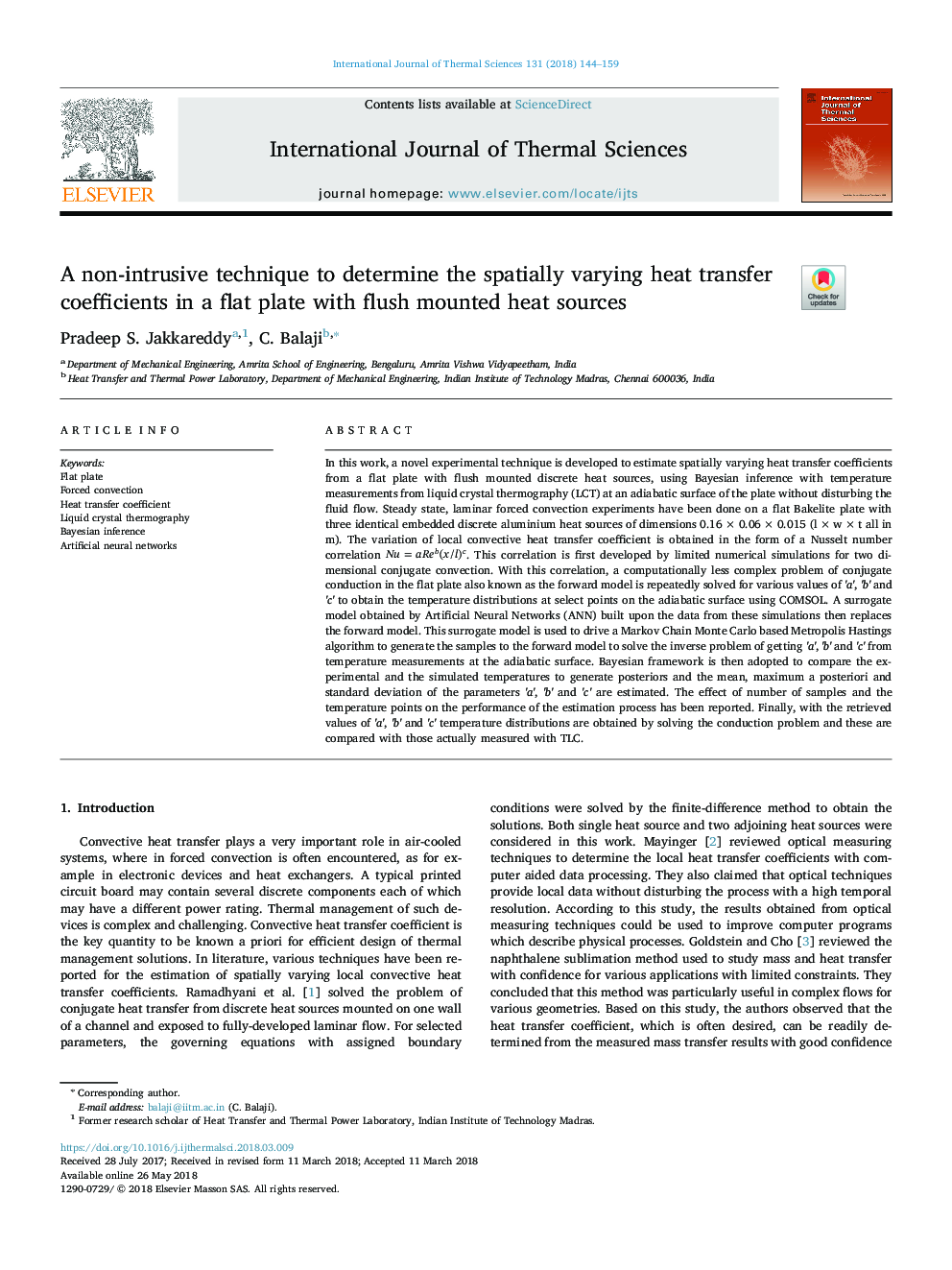| کد مقاله | کد نشریه | سال انتشار | مقاله انگلیسی | نسخه تمام متن |
|---|---|---|---|---|
| 7060601 | 1458691 | 2018 | 16 صفحه PDF | دانلود رایگان |
عنوان انگلیسی مقاله ISI
A non-intrusive technique to determine the spatially varying heat transfer coefficients in a flat plate with flush mounted heat sources
ترجمه فارسی عنوان
یک تکنیک غیر قابل نفوذ برای تعیین ضرایب انتقال حرارت حرارتی در یک صفحه تخت با منابع گرماده شده
دانلود مقاله + سفارش ترجمه
دانلود مقاله ISI انگلیسی
رایگان برای ایرانیان
کلمات کلیدی
صفحه تخت، کنسانتره اجباری، ضریب انتقال حرارت، ترموگرافی کریستال مایع، استنتاج بیزی، شبکه های عصبی مصنوعی،
موضوعات مرتبط
مهندسی و علوم پایه
مهندسی شیمی
جریان سیال و فرایندهای انتقال
چکیده انگلیسی
In this work, a novel experimental technique is developed to estimate spatially varying heat transfer coefficients from a flat plate with flush mounted discrete heat sources, using Bayesian inference with temperature measurements from liquid crystal thermography (LCT) at an adiabatic surface of the plate without disturbing the fluid flow. Steady state, laminar forced convection experiments have been done on a flat Bakelite plate with three identical embedded discrete aluminium heat sources of dimensions 0.16â¯Ãâ¯0.06â¯Ãâ¯0.015 (lâ¯Ãâ¯wâ¯Ãâ¯t all in m). The variation of local convective heat transfer coefficient is obtained in the form of a Nusselt number correlation Nu=aReb(x/l)c. This correlation is first developed by limited numerical simulations for two dimensional conjugate convection. With this correlation, a computationally less complex problem of conjugate conduction in the flat plate also known as the forward model is repeatedly solved for various values of 'a', 'b' and 'c' to obtain the temperature distributions at select points on the adiabatic surface using COMSOL. A surrogate model obtained by Artificial Neural Networks (ANN) built upon the data from these simulations then replaces the forward model. This surrogate model is used to drive a Markov Chain Monte Carlo based Metropolis Hastings algorithm to generate the samples to the forward model to solve the inverse problem of getting 'a', 'b' and 'c' from temperature measurements at the adiabatic surface. Bayesian framework is then adopted to compare the experimental and the simulated temperatures to generate posteriors and the mean, maximum a posteriori and standard deviation of the parameters 'a', 'b' and 'c' are estimated. The effect of number of samples and the temperature points on the performance of the estimation process has been reported. Finally, with the retrieved values of 'a', 'b' and 'c' temperature distributions are obtained by solving the conduction problem and these are compared with those actually measured with TLC.
ناشر
Database: Elsevier - ScienceDirect (ساینس دایرکت)
Journal: International Journal of Thermal Sciences - Volume 131, September 2018, Pages 144-159
Journal: International Journal of Thermal Sciences - Volume 131, September 2018, Pages 144-159
نویسندگان
Pradeep S. Jakkareddy, C. Balaji,
